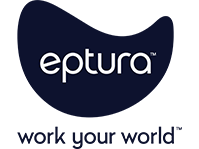
For years, businesses have relied on a patchwork of workplace technology solutions to manage everything from facilities and assets to visitor check-ins and meeting room bookings.
The logic seemed sound — specialized tools for specialized tasks. But as organizations expanded, so did their software stacks. Some now juggle anywhere between six and forty different workplace management tools, each with its own data set, workflow, and login credentials.
The result? Instead of enabling efficiency, this fragmented approach has created data silos, manual workarounds, and a maintenance nightmare. Now, companies are rethinking their strategies.
The new priority isn’t just having the right tools; it’s ensuring those tools seamlessly work together. That’s why more organizations are turning to Integrated Workplace Management Systems (IWMS) to unify their technology and leverage their data without endless manual intervention.
The hidden cost of too many workplace tools
At first glance, having a variety of workplace software solutions seems like a reasonable way to cover all operational needs. Facilities teams use one platform to manage maintenance, HR oversees another for workplace policies, and IT has its own system for equipment tracking. But when these systems don’t communicate, it becomes nearly impossible to extract meaningful insights.
Take office occupancy, for example. One tool might track badge swipes, another might log meeting room reservations, and another could monitor Wi-Fi usage. Without a centralized system to pull these data points together, workplace leaders are left piecing together an incomplete picture, wasting valuable time in the process.
Beyond inefficiency, there’s also the issue of cost. Managing dozens of standalone solutions means paying for overlapping functionality, maintaining separate vendor relationships, and constantly troubleshooting integrations. An IWMS eliminates these redundancies by consolidating essential workplace management functions into one platform, reducing costs and complexity.
The shift towards unified workplace technology
The desire for a more integrated approach isn’t just about convenience — it’s about making better business decisions. When systems are disconnected, workplace leaders can’t confidently answer critical questions:
- How much space do we actually need?
- Which locations are underutilized?
- Are employees using the technology provided to support their work?
An IWMS centralizes this information, providing a single source of truth that allows decision-makers to act with confidence. Instead of running reports across multiple platforms, teams can instantly access real-time data on occupancy trends, asset lifecycles, energy usage, and more — all from one dashboard.
This shift is already underway. Companies that once invested heavily in single-point solutions are now actively seeking unified alternatives that can scale alongside their needs. Organizations are realizing that workplace technology isn’t just about managing desks and meeting rooms — it’s about enabling strategic, data-driven decision-making.
A more intelligent workplace strategy
Relying on fragmented technology often leads to misalignment between different parts of the business. Facilities teams may struggle to justify real estate decisions if they don’t have accurate occupancy data. HR leaders might be pushing for more in-office days without insight into space constraints. IT departments could be investing in new workplace tools without understanding how employees are actually using (or ignoring) existing ones.
A well-implemented IWMS bridges these gaps. By unifying workplace data, it helps organizations create strategies based on actual usage patterns rather than assumptions. This is particularly crucial as companies adapt to new hybrid work policies.
Erik Zink and Sarah Kilmartin lead the Eptura Worktech Consultancy service and have become well-versed in guiding workplace leaders to a place where technology is a frictionless feature of the organization. “Technology alone isn’t going to bring employees back into the office,” explains Zink. “But when used strategically, it can support the right behaviors by making the workplace experience more seamless and productive.”
For example, organizations struggling with midweek occupancy spikes can use IWMS data to identify ways to level out attendance. If Mondays and Fridays consistently show lower foot traffic, leaders can introduce team-based office schedules, host key events on underutilized days, or reconfigure spaces to better accommodate fluctuating attendance.
Making data work for you
The real power of an IWMS isn’t just in consolidating tools — it’s in unlocking the value of workplace data. Organizations that switch from fragmented systems to an integrated platform gain the ability to:
- Optimize real estate portfolios by identifying opportunities to consolidate or repurpose space.
- Extend asset lifecycles with proactive maintenance and better resource planning.
- Improve employee experience by ensuring the workplace is designed around actual needs rather than outdated assumptions.
Instead of spending time manually pulling reports and making sense of conflicting data sets, workplace leaders can focus on creating environments that support both business goals and employee well-being.
Future-proofing the workplace
As businesses navigate an era of continuous change — whether in workforce expectations, office design, or sustainability goals — having a unified workplace management system provides the agility needed to adapt. While past workplace strategies may have relied on a scattered collection of tools, the future belongs to organizations that take a more holistic approach.
For companies looking to cut costs, improve efficiency, and gain better visibility into workplace operations, now is the time to move toward a single, integrated system. The technology is there. The demand is clear. The organizations that act now will be the ones best positioned to thrive in the workplaces of tomorrow.
If you’re ready to consolidate your suite of tech to one, unified and integrated platform, get in touch with the Eptura Worktech consultancy.





